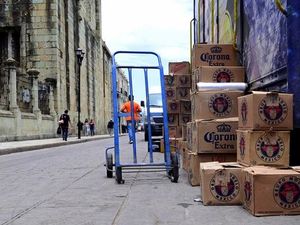4 Benefits Of Effective Reverse Logistics Management

The Need For Effective Reserve Logistics Management
Reverse logistics management has all too often been a supply chain afterthought. In the past, your return on time and money invested in the forward logistics process, manufacturing and delivering goods, was much greater than focusing on what happened after your product reached the end user. With so much going into getting a product manufactured and delivered in the first place, it's understandable that most companies dusted off their shoulders and called it a day once their product was delivered. Anything that occurred after that point was written off as a simple cost of doing business.However, with the surge in direct to consumer sales and E-commerce, reverse logistics are set to become an increasingly large part of the supply chain. Online orders are up to 5 times as likely to be returned as in store purchases. And the process of shipping an online order back to a distribution center is much more complex than simply returning an item to the store it was purchased from. With these trends set to make reverse logistics more important in the coming years, companies that get ahead of the curve and effectively manage their reverse logistics process can create a competitive advantage by realizing these key benefits.
Increased Customer Satisfaction:
Consumers are increasingly expecting not only the ability to return purchases, but the ability to do so for free and with ease. Effective reverse logistics management should provide customers with a clearly described returns process, and preferably, multiple options for the customer to return an item at their convenience. Companies that provide a straightforward returns policy and seamless process will benefit from higher brand loyalty and an increase in repeat purchases from customers.
Reduced Waste:
Effective reverse logistics management can significantly reduce waste by allowing companies to more properly dispose of products and materials at the end of their life cycle. Products should not be immediately destined for a landfill after they are sold. Unsold items can be moved and resold, packaging and certain parts can be reused, broken items can be refurbished, and what cannot be salvaged can be recycled or sold as raw material in some cases. Taking control of this process allows companies to better dispose of the inputs of their products and reduce waste providing both financial and environmental benefits.
Decreased Costs:
If you look at reverse logistics as an afterthought, the costs associated are fixed in nature. But proactively implementing a reverse logistics strategy helps you take control of these costs and find areas of inefficiency and potential cost savings. Having a plan in place to have items shipped back to a distribution center, be received at the location, and then be restocked, refurbished or disposed of as efficiently as possible can greatly decrease the costs of this process.
Increased Insight and Visibility:
Data is one of the most valuable resources wasted by outdated reverse logistics practices. When an item is returned it get sent back to its manufacturer or retailer with a host of additional data points, why it was returned, when it was returned, what part broke or was defective, etc. This information, when captured and organized correctly can provide highly valuable information. Multiple units from manufacturing, to transportation, to customer service can use this data to drive better business decision making.